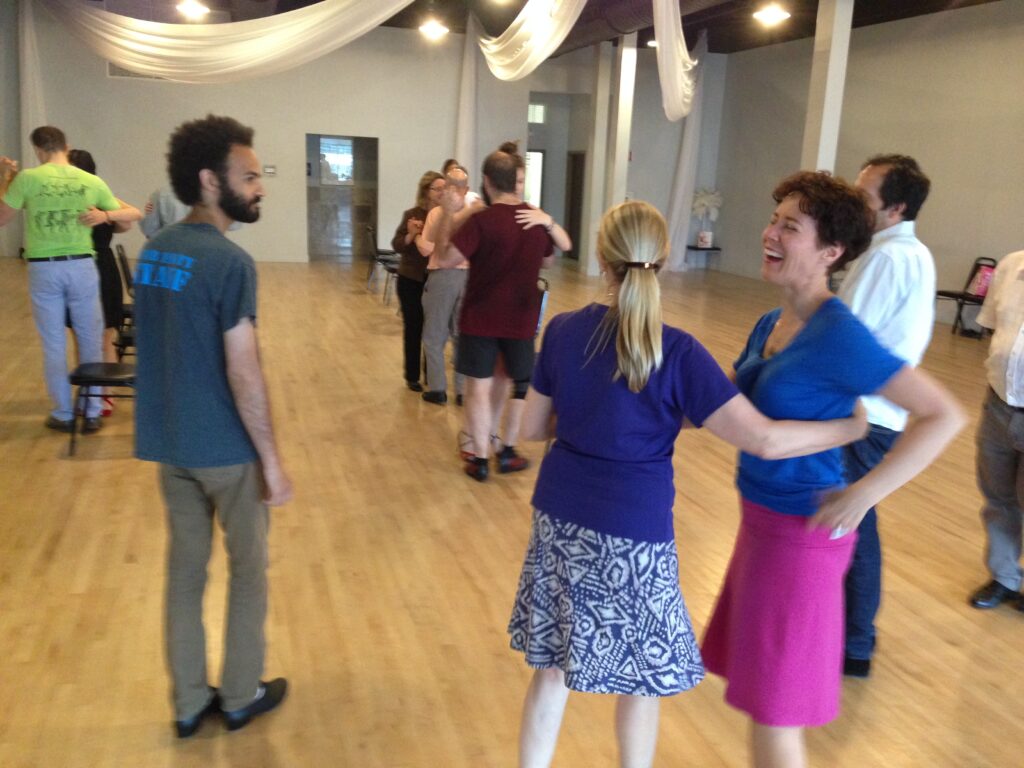
Group practices for social dancing are a well-known feature of Argentine tango, but they didn’t originate exclusively with this iconic dance. The tradition of organized group practices predates tango and has roots in earlier social dances from Europe and beyond. Let’s explore the history and evolution of group dance practices to understand tango’s influence on this rich tradition.
Early Origins of Group Dance Practices
1. European Court Dances (16th-18th Centuries):
Courtly dances like the minuet, allemande, and quadrille required participants to rehearse complex steps and formations. These dances were practiced in group settings with guidance from professional dance masters, ensuring elegance and precision for formal gatherings.
2. Folk Dance Traditions:
Folk dances around the world were communal by nature. English country dances, Scottish reels, and other traditional dances involved group learning and practice during community celebrations.
3. Ballroom Partner Dances (19th Century):
Partner dances such as the waltz and polka also saw the rise of organized group lessons, often held in urban dance studios. These classes helped participants master intricate moves and social etiquette for grand ballroom events.
Tango’s Unique Contribution to Group Practices
When Argentine tango emerged in Buenos Aires in the late 19th and early 20th centuries, it brought a distinctive approach to group dance practice. Here’s how tango influenced and popularized the culture of prácticas (group rehearsals):
– The Academias and Prácticas
Tango dancers refined their skills in informal settings called prácticas, where the focus was on experimentation and collaborative learning. These gatherings provided a space for dancers to improve outside of formal milongas (social dance events).
– A Space for Immigrants
Buenos Aires was a melting pot of cultures, and tango practices helped immigrants from diverse backgrounds learn both the dance and the social norms of their new home. Group practices became a key part of building a shared cultural identity.
– Men Practicing Together
In early tango history, men often practiced together to perfect their lead-follow techniques before dancing with women at milongas. This collaborative environment fostered a culture of mentorship and skill-building unique to tango.
Tango’s Influence on Modern Social Dance Practices
The informal yet structured nature of tango prácticas has inspired modern social dance communities worldwide. Today, salsa, swing, and other social dance styles incorporate group practices to promote skill development and community building. Tango’s balance of improvisation and structure has made it a model for how social dances are taught and practiced globally.
Conclusion: Did Tango Originate Group Dance Practices?
While tango didn’t invent the concept of group dance practice, it transformed and formalized it into an essential part of its culture. The tradition of prácticas highlights tango’s unique approach to communal learning, combining individual expression with a shared social experience. Its influence continues to shape social dance communities, making tango a key player in the history of group dance practices.
Want to join a tango practica? contact Miriam Lea at miriam.lea.official@gmail.com or check out more at www.miriam.lea.dance/classes
Have a question about this article? Ask Miriam!